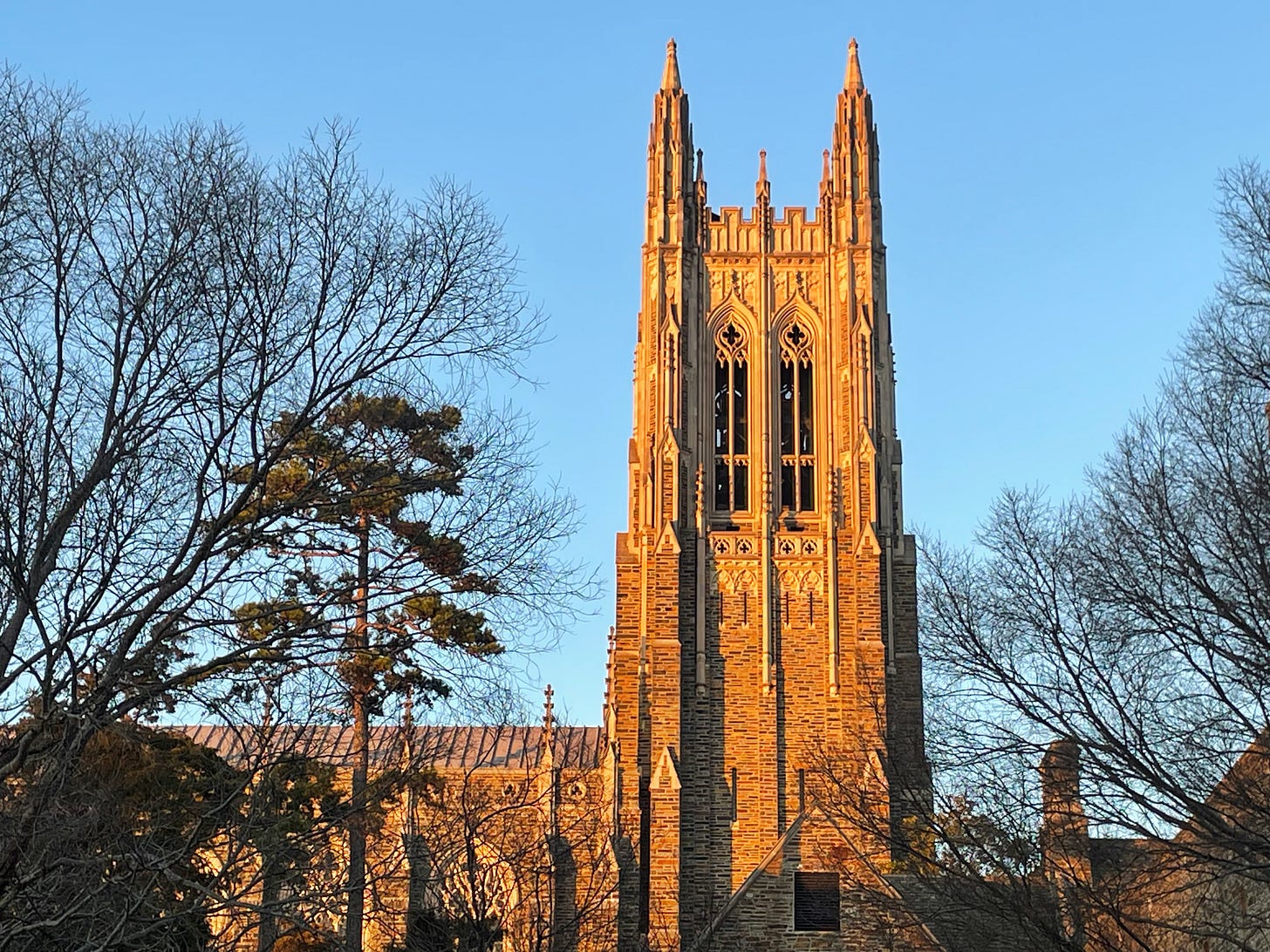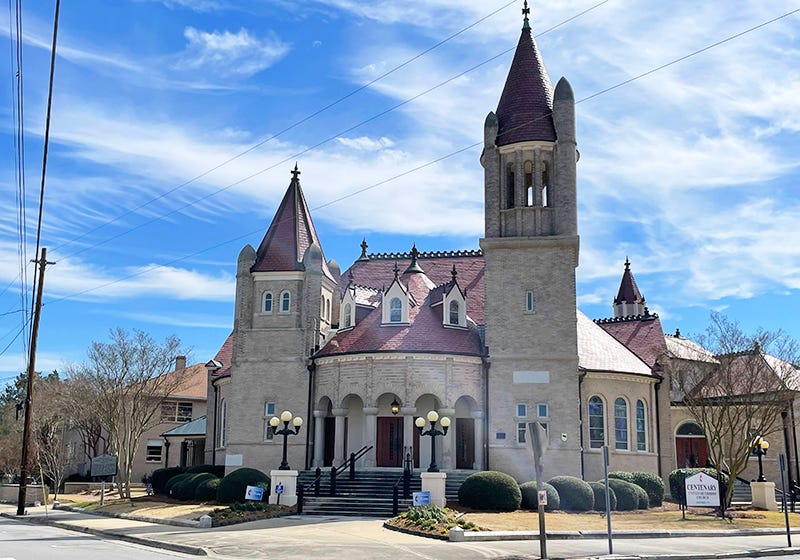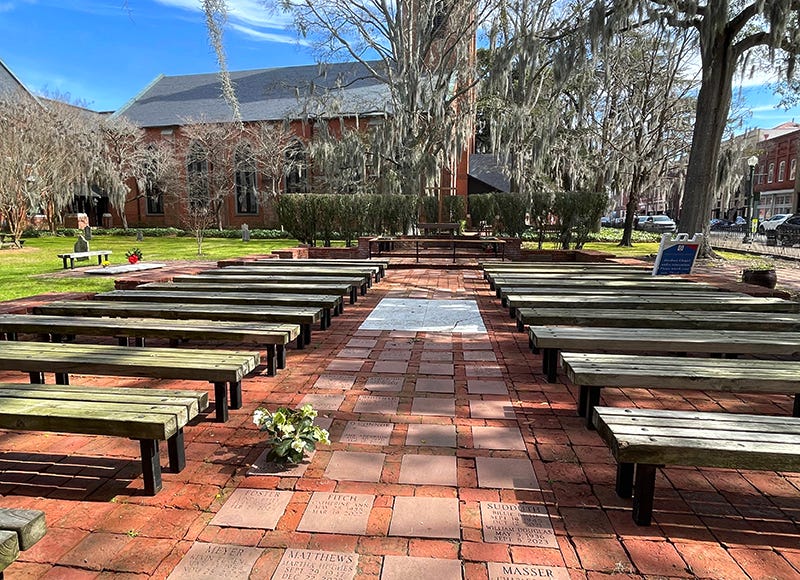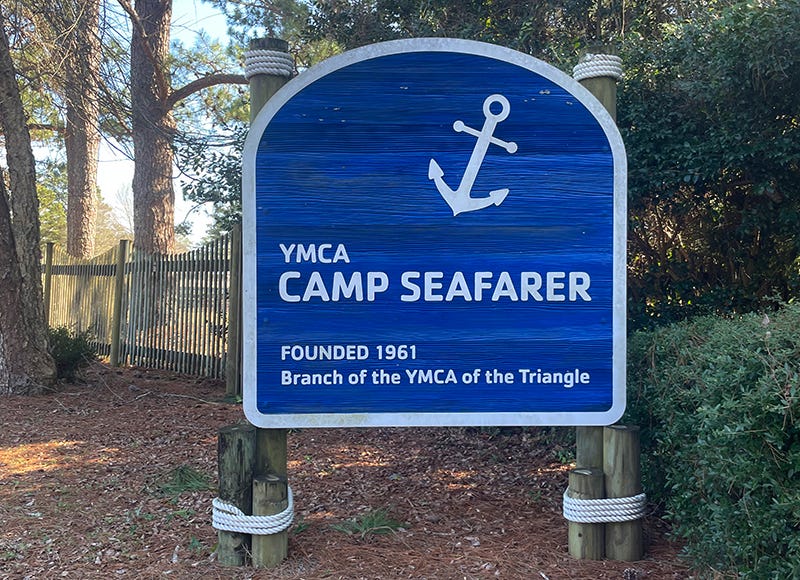Lately, I have been praying in the dark with my eyes open, not closed. I do this at night, lying in bed, to keep my mind from wandering away from the prayer and into a maze of second guessing, rehashing, speculating, and projecting. Sometimes it works.
During the day, it’s not like I talk to God all that often, but my spirit radar is always up. At home on the Island, I meet the spirit on a walk in the woods, under a cathedral of pines, in the quiet lee of a ragged sand dune. It’s there in the dance of the dragonflies and the eyes of the hawk, in the translucence of morning mist and the bottomless wonder of a starry night.
But when I’m traveling in cities, as I have been this week, I seek out churches. Or they find me. I don’t know exactly how this happens, how I get there. But I do know there is nothing I find more peaceful than sitting on a cool, varnished wooden pew in a near-empty church, watching the sun toss rainbow baubles through stained-glass windows.
I might kneel or bow my head to say a prayer. I will look up at the vaulted ceiling. Mostly I will sit very still, absorb the beauty, and rest my mind. If the organist is practicing, all the lovelier.
The organist was indeed practicing – on one of four organs – when we stepped inside Duke University Chapel last weekend. I insisted on showing my husband this grand gothic structure as soon as we arrived in Durham, North Carolina. I thought he might appreciate the craftmanship and the engineering, might find the 73-foot-tall nave and the 77 stained glass windows as awe-inspiring as I do. (He did.)
Completed in 1935, the chapel was designed by Julian Abele, a distinguished Black architect who was the chief designer in the Philadelphia architectural firm of Horace Trumbauer. With its 210-foot tower and its location at the center and on the highest ridge of the west campus of Duke University, the chapel can be seen (and heard – the tower contains a 50-bell carillon) for miles around.
While James Buchanan Duke originally imagined the chapel as a spiritual beacon for students (with a decidedly Methodist hue), today it is an ecumenical house of worship with a wide range of programs from Jazz Vespers to chamber music, from podcasts to lectures, from student celebrations to student vigils.
It is also a sanctuary, open to all.
While we were there, we sat, the two of us, on chairs in the transept, listening to the music and admiring the ornate woodwork in the choir. We went down into the crypt where Duke presidents are buried and then left the chapel, pushing open the great heavy oak doors and leaving behind the cool reprieve for the blinding afternoon light lunging from the western sky.
Later in the week we traveled east to historic New Bern, the original capital of North Carolina, settled at the confluence of the Neuse and Trent rivers. It has a remarkably well-preserved downtown with 164 structures in the historic register. As we walked the stone and brick sidewalks, admiring the public buildings (including the birthplace of Pepsi-Cola, Bradham’s Drug Store), I marveled at the number of churches we passed:
First Presbyterian Church, built in 1822, used as a hospital by the Union Army during the Civil war.
Centenary United Methodist Church, built in 1885.
First Baptist Church, 1883. Historically black St. Cyprian’s Episcopal Church, 1866.
And then, on Middle Street, fringed by a curtain of Spanish moss draped over live oaks, Christ Episcopal Church. I followed the wrought iron fence along the sidewalk, admiring the churchyard, and came to an open gate.
I stepped inside and found the most lovely surprise – an outdoor worship area. Rows of wooden benches, separated by a brick memorial walk that led to a humble altar backed by a privet hedge. Someone had left a hellebore plant on one of the bricks.
This, I thought — yes! An outdoor sanctuary – a place to sit, remember, meditate, pray, feel the breeze, turn to the sunshine, listen to the birds, watch the squirrels. And to be in community; no doubt there are weddings and memorial services and other gatherings in this spot.
As much as I love the cool quiet inside a church, there is something even more special about an outdoor refuge, a designated sacred space in the open air. It made me think I should create a sanctuary in my own yard.
This outdoor chapel moved my memory (and our trip) even further east in North Carolina, down the Neuse River to the camp where I spent eleven happy summers.
At camp, our place of worship was a screened-in hut, which was almost like being outside. Every Sunday, we put on our camp uniforms – a scratchy sailor top and navy shorts – and gathered in the spacious, airy hut; little girls sitting side by side on wooden benches, swinging our legs, occasionally poking each other or whispering.
I remember that Seaweed the 25-year-old donkey would be grazing just outside the hut, and there were times when my attention wandered to him – and to the glint of silvery morning light on the lake we’d soon be swimming in. The afternoon sea breeze was still hours away, and the torrid heat of high Carolina summer was already rising from the dusty clay-red ground. The shade of the hut kept us cool, but the sticky hum of summer was all around us.
But what I remember most about the service was the joyful singing, the gentle readings, the counselor we adored who played the guitar and sang, the messages of love and kindness. It was a YMCA camp so the service was Christian. But many of my camp friends were Jewish, and nothing about the service was indoctrinating. All faiths were and are welcome at camp.
(I also remember that my mind occasionally wandered to the fried chicken we had every Sunday for “dinner” at noontime. Even then, I was concerned about what my next meal was going to be!)
Not only Sunday, but every day – every summer – at camp fed my spirit and brought me joy. It was such a powerful experience for me that my husband didn’t hesitate to agree when I suggested last week that we take a drive down to tiny Arapahoe, 30 country miles from New Bern, just so that I could look through the gates of camp (which is closed this time of year) and catch the sparkle on the lake. Just so I could set the time machine back for a few minutes, to feel my heart swell with all that gratitude.
I stood at the gate and thought to myself that in a way, camp itself was a sanctuary for me.
After my last summer at camp (I was a senior counselor by then), I tried to carry that world of goodness and kindness into my new adult life. But of course the real world (and my own experience in it) proved to be much more complicated.
But one thing I have held on to is the notion of sanctuary, whether it be a garden bench, a fancy church pew, or any other sacred place. And no one can take that away from me – or from you. I wish that everyone could have a sanctuary, no matter what.💚













Camp!!!!! One day I’ll write about my camp, which sadly has been abandoned. Thanks for the organ video. The perfect sound for a Sunday morning.
Next time you are in Durham, stop by for a bagel sandwich or a pastry and a coffee at my son-in-law Isaac's Bagels, on Chapel Hill Street, not far from the Duke campus. His bagels were recently voted "best bagel in The Triangle." We'll be in Durham soon, for the birth of our first grandchild. May stop into the Duke Chapel for a moment of meditation on the circle of life.